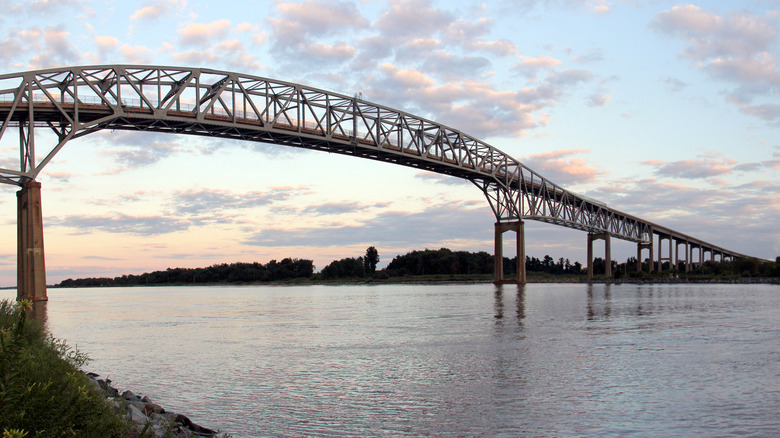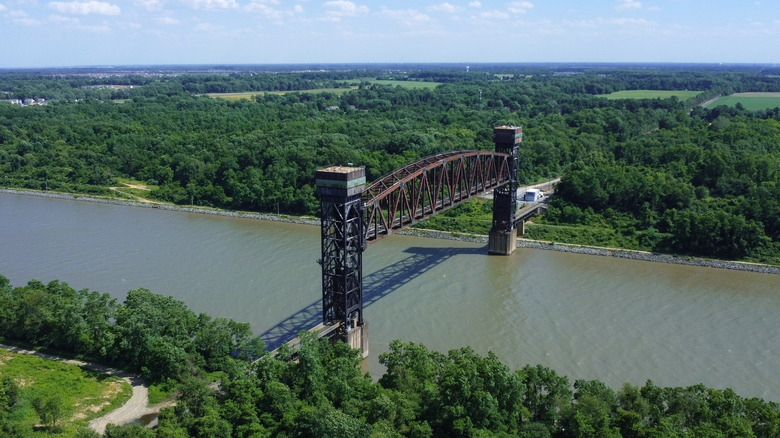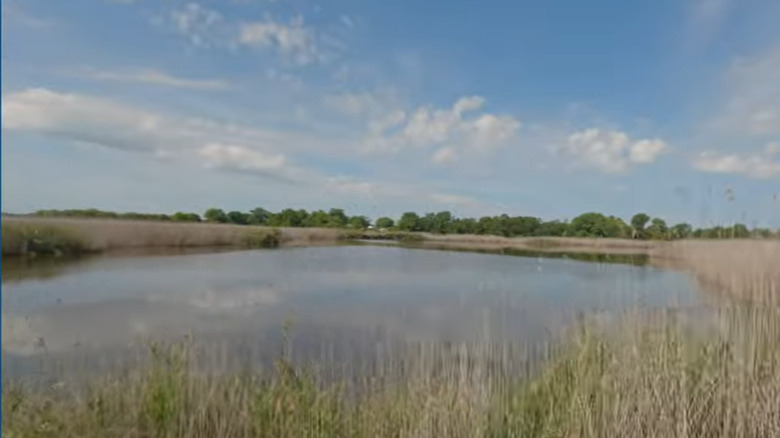A Scenic Trail Guides Travelers The Whole Way Across Highly Walkable Delaware In Just One Day
If you were going to pick a state to walk across, which would you choose? While Alaska, California, and Colorado would be expert-level choices, Delaware is more beginner-friendly and is a great "First State." Even though it isn't as small as Rhode Island, Delaware is the flattest state overall and only 9 miles across at its narrowest point. Whether you're on foot or on a bicycle, you can easily cross Delaware along the paved 12.1-mile long Michael N. Castle C&D Canal Trail, which runs across the state. The trail traverses across the northern bank of the short, 14-mile Chesapeake and Delaware (C&D) Canal, cutting through Delaware from the Delaware River into the Chesapeake Bay in Maryland.
This incredibly scenic and interactive trail is designated as a conservation area. Former Delaware Congressman and Governor Michael N. Castle spearheaded the C&D Canal Trail project for the state along the historic canal. Although a canal through Delaware was first envisioned in the mid-1600s, it took nearly 150 years until Irish and African Americans began construction with basic tools, finishing the project in 1829. As the US further industrialized, the canal was dredged and expanded for merchant ships crossing the Atlantic.
Today, the canal is one of two sea-level canals that do not use locks in the United States, making it a major artery for the Port of Baltimore and the busiest canal in the country. To see this civil engineering feat, start at either one of the ends. The eastern end in Delaware City is locally known as the best place to start, and is about one hour away from Philadelphia. The western canal basin is in Maryland, about two hours from Baltimore.
What you'll see on the trail
Although Delaware City flies under the radar, it has several significant historical sites where you can connect with the past. Delaware City is home to Fort Delaware State Park, the departure point for Pea Patch Island, where you can experience life during the Civil War on one of Delaware's most beautiful Islands. Nearby, you'll find two gems. As you head down the Castle Trail, don't miss the small African Union Church Cemetery, where Black soldiers who served in Delaware's United States Colored Troops were buried in Polktown, one of Delaware's first free Black cities.
Unlike other trails in the wilderness, the C&D Canal Trail has four primary access points, with bathrooms, parking, and nearby restaurants and bars. St. Georges Trailhead is easy to access just off of US 13, and the nearby Saint Georges Country Store showcases live music and authentic Cajun food despite being over 1 thousand miles from Louisiana. A bit over 4 miles from Saint Georges, you'll find Grain H2O serving up craft beer and crab nachos with a side of bingo and trivia, and live music to wash down a splendid afternoon.
Be sure to lace up a good pair of athletic shoes and bring plenty of water, snacks, and a hat, as there is no shade. Anyone looking to meet and mingle with locals shouldn't miss the Wilmington Trail Club's annual Hike Across Delaware (HAD) on November 1. If you still have energy left, invite them to join you for a drink on the cobblestone streets and European-esque charm of nearby New Castle.
Your guide to the canal's history and scenery
Delaware's official tourism moniker is "Endless Discoveries," and you're bound to find plenty as you walk across the state. Within the nearly 5,200 acres of the canal area, you'll find lush habitats home to spotted egrets, osprey, herons, and even bald eagles, as well as deer, turkeys, rabbits, and raccoons. Although fall is an ideal time to visit, it is also in the middle of hunting season, and you may hear shotguns or muzzleloaders from the trail. Hunters are required by law to follow safety protocols, including wearing orange, not hunting within 100 yards of the trail, and keeping all firearms unloaded between sites.
Across the state border in Chesapeake City, Maryland, one of the original pump plants used in the canal serves as the C&D Canal Museum, featuring markers, pumps, a detailed history of the project's expansion, and even fossils. Over the past centuries, engineers and architects have uncovered signs of life in the canal area from the Cretaceous period, over 140 million years ago. Even though you can no longer hunt for fossils along the canal, this former glistening lake in Wyoming is full of signs of ancient life and fossil beds with one-of-a-kind souvenirs.
While the C&D Canal may have been only 10 feet deep when it was first built, it holds a deep place in American Civil Rights history. In 1856, Harriet Tubman assisted a woman named Tilly through the canal as she escaped to Canada. Due to the canal's importance as a critical thoroughfare for the Underground Railroad until the end of the Civil War, it is part of the National Park Service's Network to Freedom.


